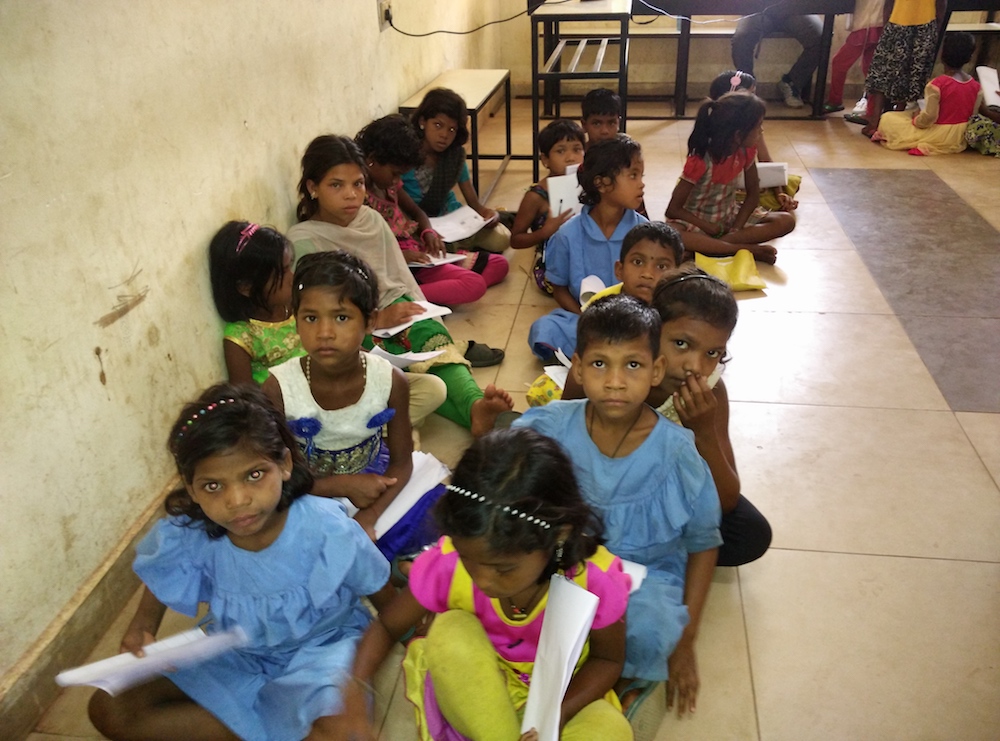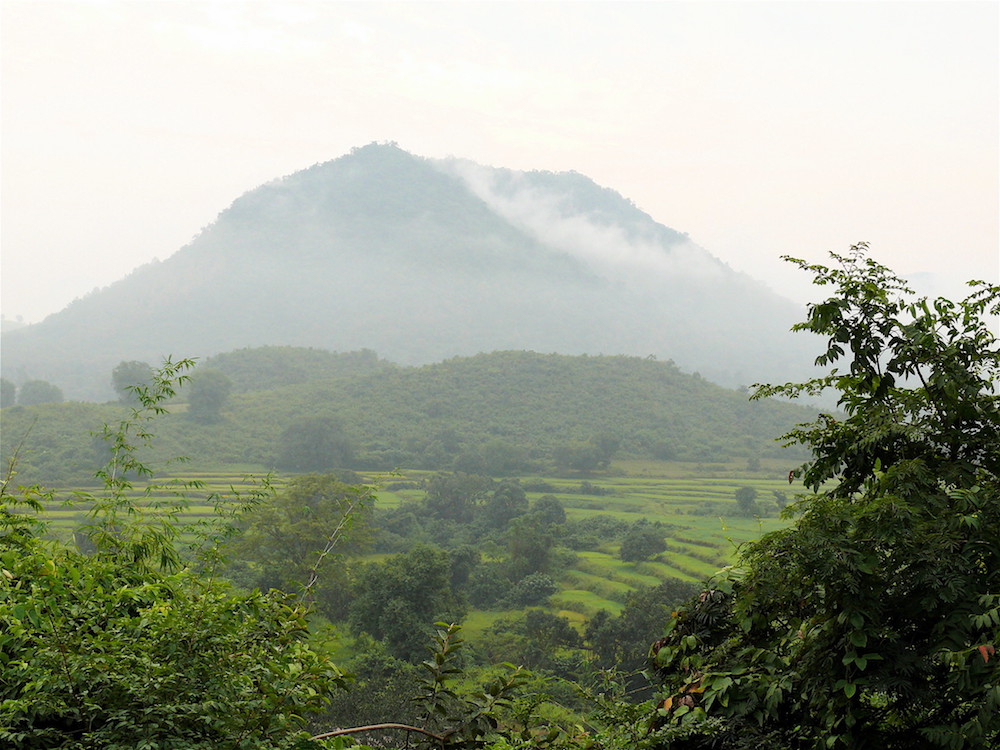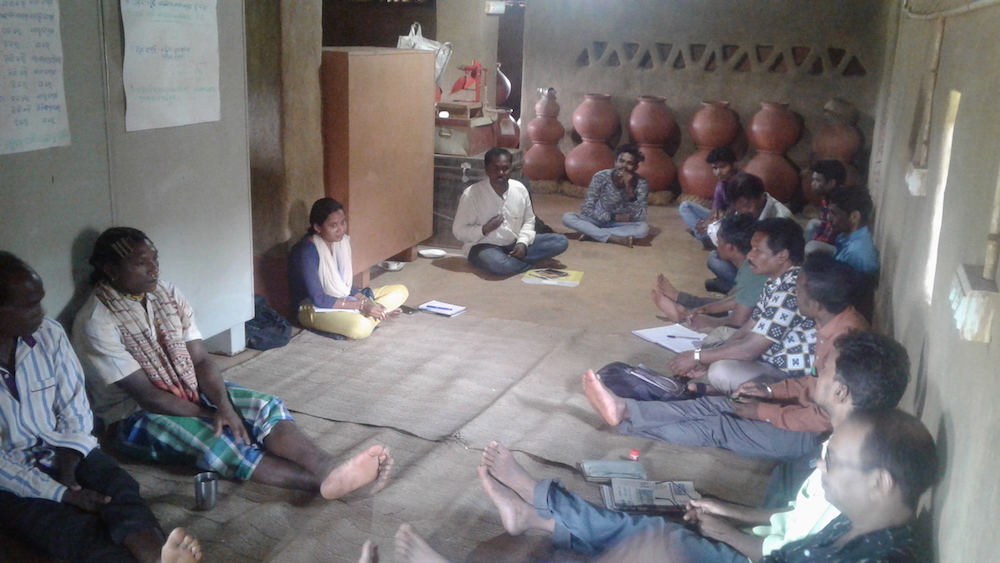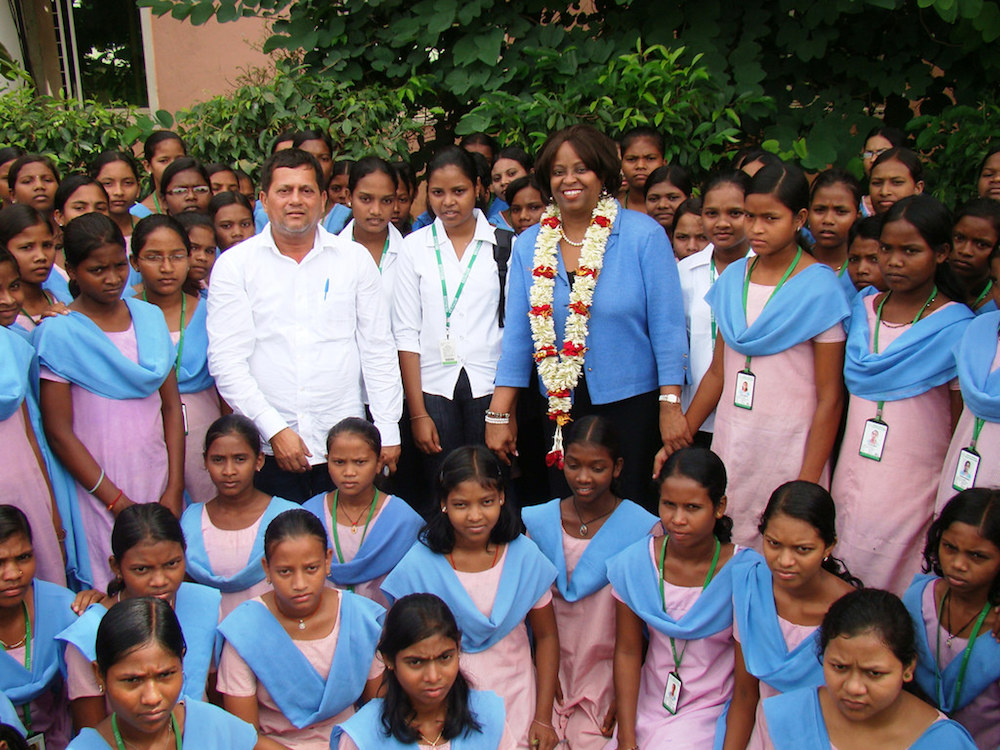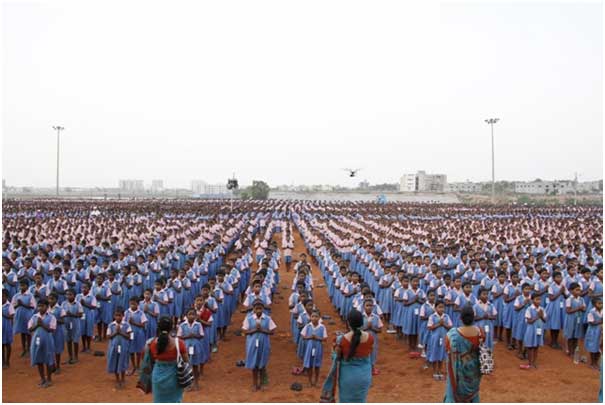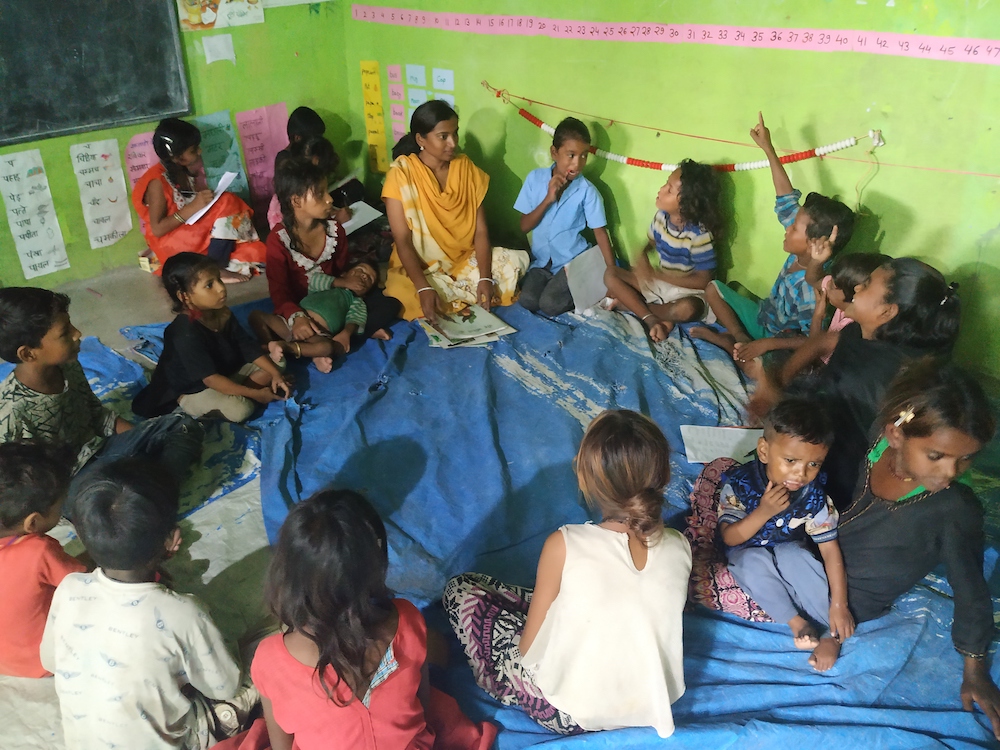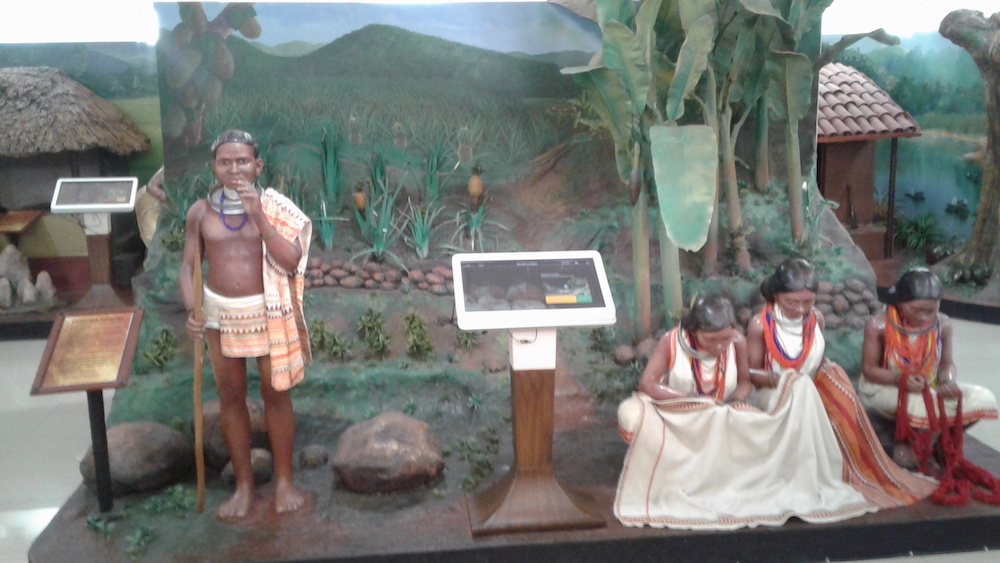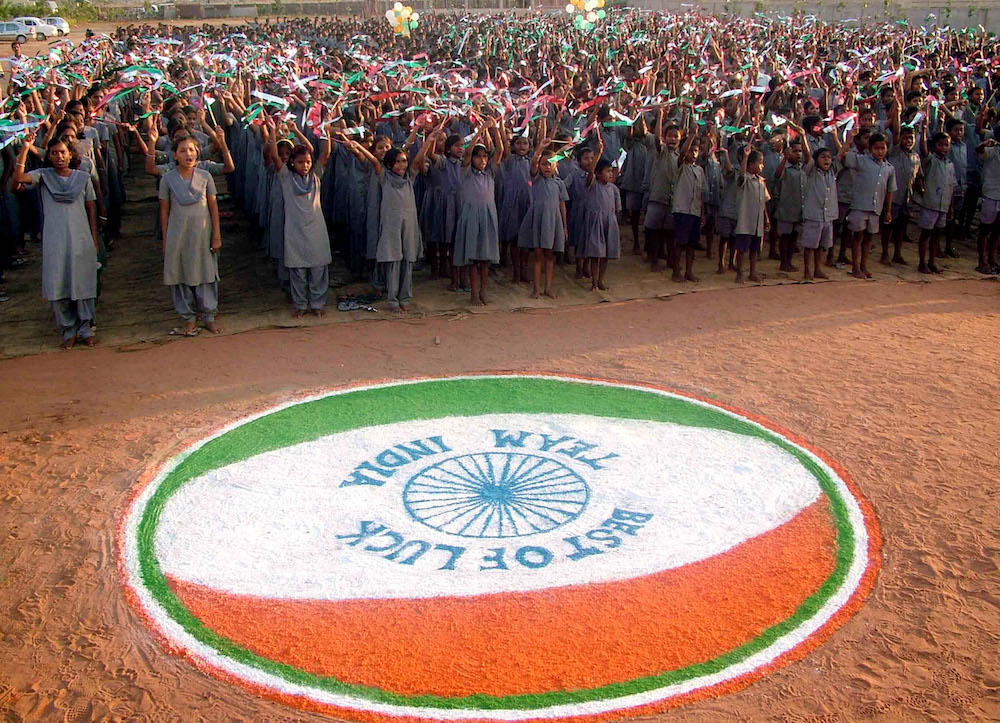The Travesties of India’s Tribal Boarding Schools
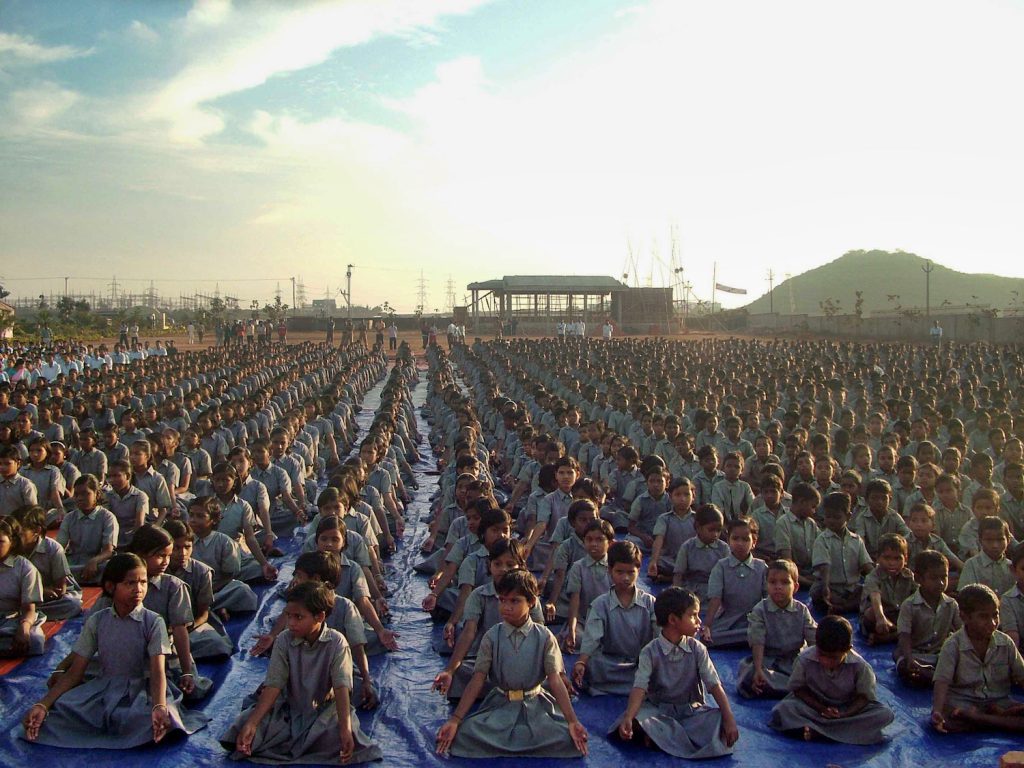
The Kalinga Institute of Social Sciences (KISS) in Bhubaneswar, Odisha, India, is the world’s largest boarding school. KISS is a private school that some people within India’s government promote as the new model of tribal education. The student body totals 27,000 pupils from kindergarten to postgraduate, all from tribal communities. (India’s Indigenous population is over 100 million; 62 tribes are officially recognized in Odisha alone.) KISS’ website claims the school and its associated university are the world’s largest “anthropological laboratory.”
In 2016, the anthropologist Christine Finnan wrote in SAPIENS how KISS sees itself as an institution that offers hope. This is also how KISS presents itself, emphasizing an aim of turning many students into “change agents for the indigenous … community.”
The intentions of KISS in offering free education to tribal children are laudable, as are Finnan’s in highlighting hope. Her conclusions in a more recent article are that, given the right conditions, a “total institution” such as KISS can be a “castle of hope,” a phrase the school uses for itself. But unless the realities of dispossession, cultural racism (prejudices and unequal practices based on cultural differences between groups), and structural violence that tribal children and their families face on a daily basis across India are articulated and confronted, how can hope be real?
In contradiction to Finnan’s assessment “that the school is unlike the boarding schools for Indigenous children that are part of the painful legacies of North America and Australia,” we argue that KISS does share deep similarities with those now-defunct and discredited residential schools. KISS embodies the same basic ideology of “civilizing” through education.
The Canadian Truth and Reconciliation Commission—for all its shortcomings—concluded in 2015 that the residential schooling system in Canada amounted to “cultural genocide.” Might such a conclusion also apply to what is happening in India?
Through this op-ed, we aim to draw attention to the implications of KISS for the overall tribal education policy in India, placing it in the history of tribal boarding schools in the country, which now number several thousand. We also raise concerns about contemporary boarding schools, particularly mega-schools that are privately run. We respectfully question whether Finnan’s perspective reinforces KISS’ self-image and interrogate KISS’ entanglement with anthropology. While Finnan’s analytical focus is on KISS, ours also addresses the overall tribal situation in Odisha and India, more generally, so our critical spotlight on KISS highlights its political, industrial, and ideological context.
We visited KISS in September 2017 as part of our intensive investigation into tribal education in India. Much of our information in this article comes from many formal and informal meetings and discussions about tribal education with a wide range of students, staff, parents, Adivasi (tribal) activists, government servants, and others. These have been conducted by us individually, together, and through local contacts during the last five years, and include over 50 in-depth interviews specifically on KISS (many in Odia or Hindi; excerpts translated here into English) with KISS ex-staff and ex-students and their parents, who all spoke on condition of anonymity due to intense fear of reprisal.
The information we have gathered gives cause for grave concern.
Our interviews and discussions led us to a number of observations. Children at the Kalinga Institute of Social Sciences dress in blue and pink uniforms, their hair is cut short, and no traditional ornaments are allowed—just as tribal knowledge and value systems find little place in what is taught. Children reportedly stay without a break for 10 months a year and, we were told, have limited contact with their families. Specifically, parents report that when they are permitted to visit, they are not allowed to enter their children’s hostels and that children arriving back at school after the summer break have their bags scrutinized for any food brought from home, which is forbidden and thrown away in front of them as “unhygienic.”
India has the largest Indigenous population in the world. Officially termed Scheduled Tribes, a majority call themselves Adivasis (“First Dwellers”). A recent government report does not mention KISS specifically but characterizes India’s tribal policy as inherently assimilationist. Based on our reporting and observations, it appears to us that for many Adivasi children, boarding school represents the first stage of an assimilation process.
As part of this process, most children have to adapt to a new language, usually the dominant state language. Exclusion of tribal languages from most of India’s tribal schools has contributed to the diminishing use of several hundred ancient tribal languages, which some scholars have termed “linguistic genocide” in similar contexts. This is a tremendous loss in that each such language encapsulates a unique worldview. KISS does have a Mother-Tongue Based Multilingual Education program. However, its lab appeared to be operating at minimal levels when we visited, and several experts have informed us that it exists largely for show.
Another key concern is the way in which private funding for schools is impacted by mining industry activities. For example, in Odisha, the Dongria Kondh, a tribe of about 8,000 people, have been severely impacted by Vedanta Resources’ plans for mining bauxite in the Niyamgiri mountain range. Dongria remained remote from external influences until the 1990s and won a landmark battle against Vedanta in 2013. Vedanta’s plans involved a mine on a mountain summit sacred to Niyam Raja, a being central to the Dongria cosmological world. Twelve selected villages voted unanimously against the project in a case of great national and international significance.
However, the threat to the Dongria’s land and way of life did not end there. Hundreds of government day schools in Niyamgiri and other tribal areas have been closed recently (unrelated to COVID-19), so many Dongria children, if they want a school education, must attend boarding schools. The “ashram” residential schools are often government-run or public-private institutions. But increasingly, large-scale, privately run residential schools have sprung up. These schools may be located far from children’s home communities. In 2012, the Vedanta Foundation with Vedanta Aluminium signed an agreement to pay for 100 Dongria children to be sent to KISS, 400 kilometers away.
India’s tribal residential schools offer education to an extraordinarily large number of children, including many from communities whose land is sought by extractive industries. Foundations set up by several mining companies have signed deals with KISS for joint education projects in recent years. We believe that these funding links play a role in undermining resistance to mining on Adivasi lands.
When we asked Lado Sikaka, a key leader in the movement that saved Niyamgiri from mining, what kind of education his people require, he replied:
“We don’t want an education or schooling that allows or encourages mining. We need development that saves our forests, mountains, and water. They want to mine—to cut out the heart of our mountains—and then say that they are ‘developing’ us and that they will give us schools. No, we won’t agree to that. The most important thing is for our mountain to thrive and for our forests and lands to live. Only when that is certain will we think of schools and only if they teach in our Kui language. Only that is development for us.”
Such a view seems at odds with the stated aspirations of those advocating for residential schools.
In 2017, Lado’s niece, Kuni Sikaka, was arrested on the charge of being a Maoist in a case some believe to have been fabricated. A New Yorker article contrasts her choice to stay in her village with another Dongria girl’s choice to attend a residential school. She comments with humor that, as her village sees it, “If you read, you become a servant of the company; if you don’t read, you stay a master of your land.” Kuni’s statement reveals how some Adivasis see formal schooling as a means to co-opt both children’s minds and their land.
Taking children away from home to “civilize” them breaks the circle of life that transmits values, skills, and languages between generations, just as historic North American Indigenous boarding schools embodied the ideology of “Kill the Indian, Save the Man.” The underlying theory, starting with the Carlisle Indian Industrial School that opened in Pennsylvania in 1879, is social evolutionism, one of the dominant ideologies in 19th-century anthropology, which perceived education as a means of speeding up “social evolution” from a “primitive” tribal stage toward “civilization.”
In tribal boarding schools throughout India, children are brought into a different world of values and knowledge. In this alien social construction of reality, which, in describing KISS, Finnan and her co-authors refer to as the “KISS culture,” most knowledge and values of tribal children’s families have little currency.
Taking children away from home to “civilize” them breaks the circle of life.
KISS’ model, therefore, can come as a major shock to children (especially younger ones) who have grown up in distant tribal villages. Its industrial scale and hierarchy contradict their lifeworlds. Under the guise of hope, we contend that schools such as KISS may be serving to “convert” children in two related senses: one, by instilling an ideology of industrialization in a process comparable with religious conversion, which some people term “brainwashing,” and second, by transitioning children from land-based families to participants in an industrial workforce in mining projects that are extracting land from tribal ownership or occupancy.
If this is so, why do so many tribal families send their children to distant boarding schools?
In India, enrollment is rarely based on physical coercion. However, our research suggests that many factors compel parents toward enrollment, from severe economic pressures to the systematic neglect, including underfunding and closure, of local day schools. Also, according to the evidence we have gathered, KISS has undertaken recruitment drives in tribal districts through a state-corporate nexus that involves police, politicians, and mining officials.
Adivasi leaders have told us that they believe schools such as KISS play a role in undermining their cultural and political movements. Soni Sori, for example, a well-known Adivasi leader and former schoolteacher, said in a recent article:
“When factory schools like KISS take children away from their homes and ecologies, they are consciously displacing children from their everyday realities, with a curriculum that teaches children to be ashamed of their community, its knowledge systems, and ways of life. This makes Adivasi children unwilling to stand in defense of their lands.”
To understand our concerns, it is important to contextualize today’s large-scale tribal boarding schools within the larger history of India’s varied school systems. Like early North American Indigenous boarding schools, India’s tribal schooling system has historically stemmed from an ideology that mixed social evolutionism with the dominant religion.
Beginning in the mid-19th century, Christian missionary schools created an educated tribal elite in India. From the 1920s, a reaction to missionary education led to a proliferation of residential “ashram” schools for tribal children. Many of these schools are widely understood as forming part of an extensive Hindutva education program aimed at Hinduizing Adivasi children. In the 1960s, policy experts recommended that schools for tribal children should incorporate tribal languages and adapt school dates so as not to clash with tribal festivals and seasonal agricultural work. These experts recognized that children participate with their families and learn a multitude of skills in a work-play continuum.
Yet few ashram schools followed these directives. Far from adjusting the school calendar to seasonal community work, there has been a widespread tendency to blame tribal parents for exploiting their children’s labor instead of sending them to school.
Several new kinds of boarding schools were launched in the 1990s. More recently still, as mentioned, foundations associated with mining companies have started their own schools. In particular, the Adani Group, whose coal projects on Indigenous lands in India and in Australia have drawn criticism, is funding several education projects. The Adani Foundation (the Adani Group’s corporate social responsibility arm) opened a new school with KISS in January.
The quality of the residential schools varies considerably, but our investigation suggests that many schools tend to impose a rigid uniformity that is insensitive to tribal ethos, imprinting most children with a sense of inferiority. Cultural racism is evident in both ashram schools and privately funded educational institutions. Just as, for example, Native American children were assigned Christian names upon enrollment in a boarding school—erasing names from their own cultures—tens of thousands of Adivasi children have been allocated Hindu names as soon as they register in an ashram school.
Since 2000, critics, including Adivasis, have highlighted tribal children’s alienation from their families and traditions as a result of the residential tribal educational system in India. Moreover, journalists have reported sexual abuse, rapes, and deaths, including suicides, in tribal boarding schools and hostels; these often go underreported, not least in Odisha.
Though widely praised by government and nongovernment sources, the Kalinga Institute of Social Sciences has been criticized by government institutions, such as the Child Welfare Committee (CWC). Its 2017 inspection report expresses serious concerns about children’s well-being, including bed-sharing in overcrowded dormitories, monotonous food, insufficient toilets, lack of any grievance redressal mechanism, unreported cases of children running away, and no independent inspection.
The committee recommended that KISS be officially registered under the Juvenile Justice (Care and Protection of Children) Act 2015 with the Department of Women and Child Development, and recognized by the Tribal Welfare Department (Government of Odisha), in order to ensure children’s rights and safety. In addition, the committee stated that it should follow established guidelines for child safety. KISS is overseen by the Education Department of the Odisha government, but critics we spoke with expressed concerns about the department’s level of expertise in tribal matters and that their inspection does not extend to the hostels.
Soon after the CWC report was filed, the Revenue Divisional Commissioner (RDC) released a follow-up report—which we obtained through a right to information request, but unfortunately, it is not posted online—dismissing many of the CWC’s claims. In our view, the RDC report did not take seriously many of the concerns raised. Yet, because of the RDC’s higher status in the government, their report “outranked” that of the CWC. Our sources suggest that the CWC’s recommendations for solving these problems were ignored by the school on grounds of the report being “politically motivated.” The school has reportedly asserted that the CWC report is “false and baseless.”
Adivasi societies regard elders and ancestors as sources of wisdom and guidance.
Former students have told us that when KISS is in session, they could not maintain regular contact with their families. As noted in the CWC report, children do not understand their rights. In such cases, how will they come forward if they do not have a clear grasp of the state or national protections in place to keep them safe? How will they know when their rights are being violated? Meanwhile, there have continued to be unsettling reports that children at KISS have run away.
In our research, we learned that many children have complained of numerous traumas they face at KISS, and medical experts attending regular clinics there have reported to us that scabies, tuberculosis, and other diseases associated with overcrowding and nutritional deficiencies are considerably more prevalent than in the children’s home communities.
It’s true that school food keeps thousands of Adivasi children from near-starvation, and KISS is proud of its industrial kitchens. However, children complain about the quality of KISS food. As one ex-student put this in an interview with us: “They did not allow anything from home. They do not even allow food that we take from home to KISS. Since we are not allowed to take home food, most of us there would fall sick.” Another said that although they belonged to poor families, their home food was much better and more nutritious than what KISS provided.
Yet another concern is how KISS students are entwined with promotion and politics. In a 2014 directive we obtained, the Odisha State Commission for Protection of Child Rights specifically directed KISS to stop using children for promotional purposes. Yet, in 2019, when KISS’ founder Achyuta Samanta ran for a seat in Parliament, our interviewees told us that many children were asked to canvass for him. Those students unwilling were scolded as ungrateful. (He won the position and currently holds a seat.) Politicians’ birthdays are celebrated in mass functions at KISS, and although its private status is emphasized, there are documented examples of promotion by certain government officials.
Regarding religion and the question of Hinduization, many parents ask why the school has such a prominent temple to the Hindu god Hanuman on its premises. Those we interviewed reported that Hindu prayers take place daily and that festivals such as Ganesh and Saraswati Puja are celebrated, while diverse Adivasi and Christian rituals and festivals are marginalized or absent. As one ex-student put it:
“Actually, we have our own religion and gods. I really feel a great pride in saying that we worship gods who hear and help us. In schools like KISS … the gods only understand Sanskrit. … Our Kondh children who go there forget how to pray in their Kui language.”
It is striking to us that in Finnan’s SAPIENS article, her recent piece, and a co-authored article, she does not address the politics of Hinduization at KISS. Hindu nationalism (or Hindutva) tends to perceive Adivasis as “backward Hindus,” a mindset promoted by influential sociologist G.S. Ghurye, who was trained in anthropology at Cambridge University in the 1920s. Indian society has been experiencing a surge in Hindu nationalism, which involves Hindutva schooling of tribal children on a huge scale.
Connected with this Hinduization process, KISS maintains a rigid separation between boys and girls, which is antithetical to traditional social relations among Adivasis. This gender division compounds the loneliness for many children and contradicts the essence of Adivasi culture. Tribal culture, according to ex-students and ex-staff we interviewed, is regularly mocked by some KISS teachers.
Many KISS pupils are labeled as “first-generation learners,” a routine description that discounts Adivasi learning systems, such as the celebrated ghotul, where elder children guide youngsters toward a vast range of skills and knowledge through work and play. Adivasi societies regard elders and ancestors as sources of wisdom and guidance. Knowledge is constructed through active engagement with the social and ecological environment based on principles of interdependence rather than on the domination of nature. We found no evidence this finds a place in the KISS curriculum, despite government policy recommendations for modern schooling to treat traditional institutions as allies, not rivals.
By contrast with this traditional respect for non-literate elders and deceased ancestors, KISS stages frequent mass receptions for foreign ambassadors and a wide range of other VIPs. Thousands of children, arranged in rows, clap on command. Finnan mentions these events and the regimented clapping that children are trained to greet these visitors with, yet without analyzing their significance in terms of the political capital the school administration makes of these events, or their psychological impact on children.
During her six months of fieldwork, Finnan says she “sought to explore the core beliefs, values, and assumptions that bind this school community together.” But where is the analysis of the assumptions underlying this orchestrated applause, for example?
Finnan writes that “KISS explicitly encourages responsibility, orderliness, and respect—and the children unquestioningly embody these behaviors.” The term “unquestioningly” seems appropriate. Does KISS pedagogy equip children with critical tools to examine the aspirations on offer?
Another revealing phrase, used by KISS, as well as in Finnan’s SAPIENS article, is “poorest of the poor.” Such “deficit discourse”—as some education scholars refer to this kind of language—was emphatically repudiated in B.D. Sharma’s landmark report as chairman of the Scheduled Castes/Scheduled Tribes Commission, which made the point that tribal people are not poor, but disinherited.
One would expect any sensitive education system to encourage children to engage critically with the continuing structural violence that Adivasis face.
Such awareness is exemplified in Muskaan, an alternative education system for tribal children in Bhopal. Like the Adharshila Adivasi residential school, southeast of Bhopal, Muskaan draws on the work of Brazilian educator and philosopher Paulo Freire, whose “pedagogy of hope” is predicated on his “pedagogy of the oppressed.” Freire’s system is based on critical thinking and political consciousness, while the KISS philosophy is based on the assumption that school education by itself will remove poverty.
And has KISS even achieved its own stated goals? Ex-employees of KISS have informed us that when Finnan inquired about statistics on the dropout rate, they were told to send her massaged data, keeping it below 2 percent. At the opposite end of the spectrum, KISS celebrates a relatively small number of “achievers”: children who win prizes in sports or who later gain high-status employment as engineers or doctors. We question whether such “successes” justify removing so many children from their communities, which evokes what Canadian anthropologist Judith Walker has termed “extraction education.”
In the words of one ex-student, among several who spoke to us anonymously because of great fear about speaking out:
“I did not face bad discrimination until I was at KISS. There I felt very bad because the hostel wardens, nurses and doctors at the dispensary, the teachers all say that we Adivasis come from the lowest levels of society. That we are lesser people. That we are messy and so on. They are very insulting to us. … When a small child arrives, the door is shut in their face. They cry for days. … There are lots of incidences of kids trying to run away. They are usually caught. … They beat and scold them, and make them feel so much fear that they will not try it again. … But lots have gone and have escaped. … There is a small number—that you can count on your fingers—of children who have gone abroad or had these big sporting achievements. With these few, the staff behave well. But for the rest—we are all from vulnerable communities, and we have to lose our dignity to get this kind of schooling.”
Such voices contradict the self-proclaimed benefits from Samanta’s life of service. The poverty and “primitiveness” he claims to have helped thousands of tribal children escape from are woven into a messiah identity. In a 2019 speech, he said:
“They fill up their stomachs only with the forest products and cover their bodies with the leaves of the plants. There are 13 primitive tribes in Odisha also. … They live—they sleep on the branches of the tree. They are known as the Mankidia, monkey [laughing], the name of that primitive tribe. … There is so variety (sic) of primitive tribes. They don’t understand anything.”
Though delivered with charisma, Samanta’s talks, in our opinion, often indicate a clear cultural bias. The idea that certain tribal people “don’t understand anything” would be absurd to any anthropologist, and it reveals an intrinsic lack of respect for tribal peoples’ ways of life.
Samanta’s promotion as a “merchant of hope” carries the implication that hope is what he sells. KISS claims that it converts tax consumers and social liabilities into taxpayers and social assets, “creating change agents for society,” including KISS alumni to teach in the expanded network of schools being planned.
Abhay Xaxa, a leading Adivasi scholar-activist, shortly before his untimely death in March of this year, encapsulated KISS’ role as follows:
“The KISS-Adani model of factory schools presently being implemented in Odisha is a living example of how corporate forces in connivance with the state are brainwashing lakhs [hundreds of thousands] of poor Adivasi students by unleashing cultural genocide. … The young Adivasi minds are blindly made to learn language and culture of dominant society.”
Many visitors to the Kalinga Institute of Social Sciences are taken to Bhubaneswar’s Odisha State Tribal Museum, at the Scheduled Castes and Scheduled Tribes Research and Training Institute (SCSTRTI), a center for anthropology under the Odisha government According to those we spoke with who work at the institute, it maintains a close, informal connection with KISS.
If one stated aspect of KISS as a self-proclaimed “anthropological laboratory” is turning children into “change agents”—implying to us an experiment in social engineering—another aspect comes into focus when KISS is looked at together with this museum. On the surface, the museum mounts an impressive display of Odisha’s 62 officially recognized tribes. Yet much about this museum is disturbing in light of how it perpetuates colonial-era methodologies, which Indigenous peoples around the world have increasingly critiqued.
Larger-than-life models of each tribe stand at attention in the middle of rooms filled with artifacts from tribal villages. In our view, the museum objectifies tribal people, just as anthropologists often reduce them to data.
In other words, this museum projects the same primitivizing, top-down view of Indigenous cultures that Samanta’s words evoke. Traditional ornaments, dress, and hairstyles forbidden for children at KISS are museumized here, for all to gaze at, as if frozen in time. Moving between KISS and the museum, the message seems clear to us: Tribal culture belongs in a museum now, not at school—except on display as entertainment.
This exoticization extends into the way that KISS has its students perform tribal dances for visiting dignitaries, in contravention of Adivasi values. A radical expression of Adivasi democracy is transformed into artificial folklore. In contrast to how KISS students are encouraged to express their traditional practices through rote performance, genuine Adivasi dance is under people’s own control.
To question KISS’ idea of itself as an “anthropological laboratory” raises fundamental questions about the nature of anthropology. As a discipline, anthropology demands genuine inquiry into cross-cultural perspectives, inspired by marginalized people’s own view of their heritage and experience. Notably, the World Congress of Anthropology was due to be held at KISS in 2023, but after protest by Adivasi leaders and their allies, the organization recently decided to move its conference.
KISS encourages students to develop the “capacity to aspire,” a phrase from anthropologist Arjun Appadurai, who has written about the “politics of hope.” KISS’ goal of creating “aspirations” among its student body must be understood in the context of a political power structure in the region that is highly oppressive to Adivasis—a power structure that is constantly justified in the name of “development.”
Real development for Adivasis needs to be under their own definition and control, taking into account their persistent demands for greater self-determination. Does KISS reaffirm tribal values, or does it indoctrinate children into an industrial worldview, suiting them for jobs in the very industries taking their lands?
Assimilation has only just begun to be analyzed in postcolonial states that promote “mainstreaming” Indigenous citizens through internal colonialism and a homogenizing cultural nationalism. So far, these practices have been critiqued more in Latin American countries, such as Chile, than in South Asia.
Finnan acknowledges in her SAPIENS essay that KISS students may lose their native language and culture—and come to view them as inferior to what they learn at KISS. She presents this loss as a trade-off, suggesting it could be necessary, given limited options, for these children to seek what she calls “a better life.” In her 2020 article, Finnan writes that KISS and its supporters “maintain that the cadres of change agents coming out of KISS will have a profoundly positive effect on indigenous communities and will help make education’s promise viable for more children.”
We cannot but notice that in these two articles, Finnan does not engage with the extensive literature on the alienating impacts of residential schools and concerns about the privatization of education for tribal students.
We believe that the planned replication of the large-scale boarding school model throughout India is likely to exacerbate cultural alienation, with impoverishment of mind and spirit for Adivasi students. Elsewhere, countries such as New Zealand and Ecuador are making genuine attempts to address interculturality and self-determination in Indigenous education.
A choice exists for KISS and other boarding schools to sincerely acknowledge the validity of Indigenous knowledge-and-value systems, and to learn from these, or to continue promoting a harmful model of converting “liabilities” into “assets” through cultural genocide.
The Odisha government recently announced plans for more mega-schools that appear to be modeled on KISS. It may take significant effort before this enthusiasm for large-scale residential schools declines. Yet these schools stand empty as we write due to India’s monthslong lockdown during the coronavirus pandemic. Might this offer a chance to rethink the whole experiment?
Culturally sensitive initiatives in tribal education from many parts of India can be rejuvenated, and contemporary alternatives can be provided with more extensive support. Adivasi children have much to teach, just as “mainstream” society has much to learn from Adivasis about living sustainably in community. Indigenous voices, alongside the findings of anthropology, give compelling reasons to “reverse the learning.”
Editors’ Note: The views expressed in this article are the authors’ own and do not represent the opinions of the SAPIENS editors, Wenner-Gren Foundation, or University of Chicago Press.































